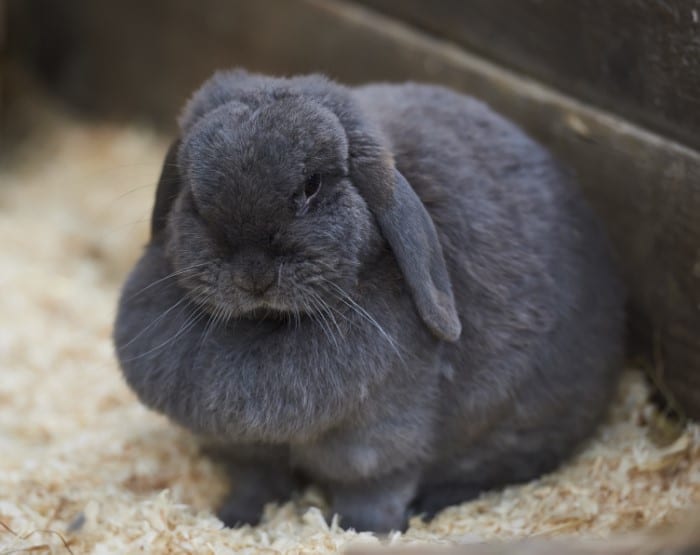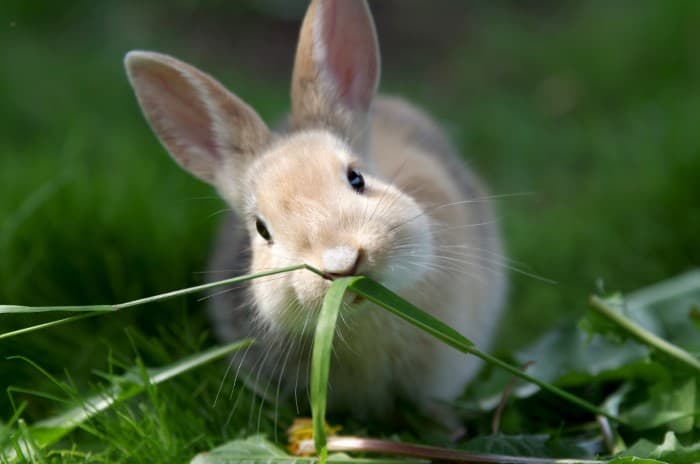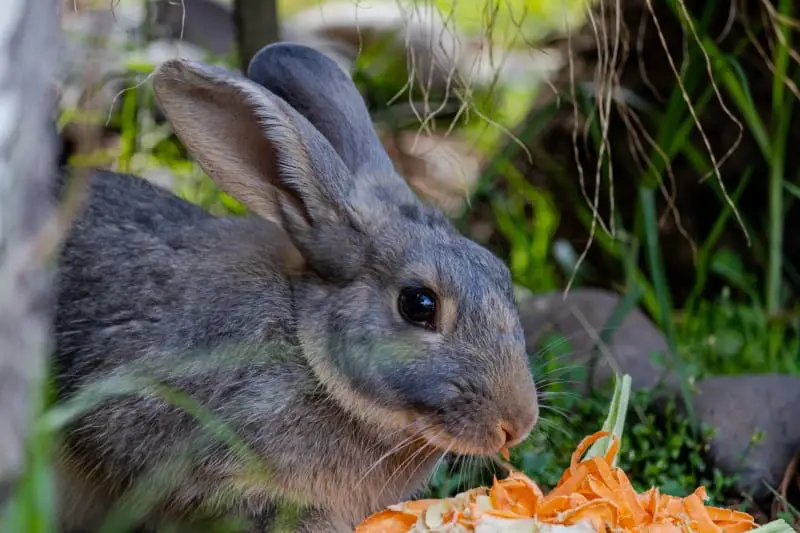As you continue to look for wholesome treats for your rabbit, you may have wondered “Can rabbits eat orange peels” Fruit peelings are often a good option since they are already available and if your rabbit is going to enjoy it, why not provide them with a tasty treat?
Are orange peelings safe for rabbit consumption?
The answer is yes, they can consume orange peels safely. You may see other information online, that frown upon orange peels for bunnies, but there is no hard evidence that the orange peel has been harmful to rabbits. Some pet owners prefer to serve the rabbit the soft white layer under the skin. In fact, it may be a good idea to offer them the orange peels more often than you offer them the fruit itself. Oranges have a relatively high sugar content and you always have to be precise when it comes to your rabbit’s diet.
A diet high in carbohydrates can lead to obesity in rabbits. Obesity affects bunnies in numerous ways. It affects their mobility. They may appear sluggish. Rabbits have very fragile skeletal structures as such the extra weight puts undue strain on their bodies. They will also be less agile and may be prone to injury.

Orange peels have significantly less sugar than the fruit itself, so feel free to offer your rabbit. Of course, with the introduction of any new food, you should offer small amounts and then monitor their physical response. Be on the lookout for diarrhoea or conversely constipation. If your rabbit seems to have an adverse reaction to orange peels, stick to the tried and true fruits that you know your rabbits love.
Is the Orange peel healthier than the fruit for rabbits?
It actually is! You would think that the fruit would be healthier and more enjoyable for your bun, but actually, the orange peel is packed with nutritional goodness! It is also rich in fibre which is an important part of your rabbit’s diet.
As you know your rabbit requires a significant amount of fibre in his diet. This helps to keep their gastric system healthy. Here is a reminder plug about your bunny’s dietary requirements:
- Grass/Hay – This should make up about 80 % of your rabbit’s diet. We recommend that you keep a constant supply in your bun’s cage or hutch.
- Vegetables and Fruits – These are to be offered as treats. Whether or not the leaves, stalks or peels can be offered depends on the fruit or vegetable. Rabbits predominantly get their vitamin and minerals from this group. You can experiment and have fun trying different fruits and vegetables. Soon, you will discovery your rabbit’s favourites.
- Pellets – These are optional and should never replace grass or hay in your rabbit’s diet.
- Water – Always provide your rabbit with fresh clean water. Refresh it as need during the course of the day.
What health benefits will my rabbit get from orange peels?
We have already said that orange peels are very nutritious and as a responsible pet owner, it is important to know exactly what your rabbit is consuming. Here are the vitamins and minerals that your rabbit will get from the orange peel.
- Flavonoids – These are antioxidants that help keep your rabbit healthy and are known help to protect against cancer.
- Phytochemicals – These also have an antioxidant component (carotenoids) and they can help protect your bunny from osteoporosis, boost her immune system, it improves dental health, and can help your rabbit fight chronic inflammation.
- Vitamin B – The vitamin B group helps protects rabbits from several conditions such as muscle paralysis, hair loss, dermatitis, diarrhoea, lack of appetite and growth retardation to name a few.
- Vitamin C – Rabbits do not need an external source of Vitamin C, they make their own Vitamin C in their bodies. Therefore, if you feed your rabbits foods that are high in Vitamin C, it can be harmful to them.
- Vitamin A -This vitamin is stored in your rabbit’s liver and is vital to functions such as reproduction, membrane integrity, growth, body tissues development and it helps with healthy vision. It can also be useful for fighting infections and appropriate immune responses. If rabbits do not get an adequate supply of vitamin A, they suffer from blindness and their growth may be impaired.
- Calcium – This mineral is crucial for healthy bones and teeth and helps ward off osteoporosis especially in older bunnies.
- Copper – It has amazing antioxidant properties and plays a role in rabbits’ healthy growth.
- Magnesium – This mineral is essential for healthy bone development and can help relieve constipation if your rabbit ever encounters this problem.
- Carbohydrates – Source of energy. Rabbits need carbohydrates, just not in large amounts, so once you feed them orange peels in small amounts. They should be able to enjoy this healthy treat.
- Polymethoxylated flavones – These have anti-inflammatory properties.
- Manganese – This mineral is essential to the bone development and general bone health of rabbits.
- Phosphorus -This element helps rabbits develop strong bones and teeth.
- Selenium – This trace element boosts your bunny’s immune system and acts as an inflammatory.
So, as you can see, even though orange peels may be overlooked, they pack quite the nutritional punch.

How much orange peel can I feed my bun?
All of the peel from a single orange is too large a serving for a rabbit at one time, we recommend quarter of the orange peel. You can offer this treat about three times for the week.
Another way you can serve orange peels to rabbits is buy adding slivers to their hay, it will add a wonderful flavour that your rabbits will love!
My rabbit may have swallowed an orange seed, will he be okay?
Orange seeds can be dangerous to rabbits since they can be the source of respiratory tract blockage which can be fatal if you do not seek medical assistance ASAP. If you suspect that your rabbit has swallowed a seed monitor her closely for any signs of distress. With a bit of luck, your rabbit should emerge from this incident unscathed.
Are all types of orange peels safe for rabbit consumption?
There are several types of oranges. if you like oranges you and your bun can have fun experimenting. Here is a list of oranges you can try. It is by not means an exhaustive list, but it is a good place to start.
- Navel Oranges – These oranges have a bright orange colour and are seedless.
- Blood oranges – These are so named for their blood-red pulp. They are smaller is size than navel oranges.
- Tangerine – The skin on this orange is softer than its counterparts. As such, your rabbits may like this texture.
- Acid-less oranges – These oranges are typically sweet and are enjoyed for eating rather than juicing.
- Mandarin oranges – They are known for their loose skin. As such they are easy to peel and your rabbit’s treat is easy to obtain.
- Seville oranges – They are known as the sour oranges. They are not really used as snacks, but your rabbits may not mind!
- Clementine – This is a hybrid orange that is a combination of the willowleaf mandarin and sweet orange. We so reason not to offer its peel to your bunny
- Trifiolata oranges – These oranges are from Asia, Northern China and Korea. They are unusual in the sense that there is sort of furry. It is not the usual orange peels that you would feed to rabbits, but there is no evidence that their skin is toxic in anyway.
There are several varieties of oranges, many hybrids, so there is a lot to choose from.
Are orange leaves safe for rabbits?
If you grow your own oranges, you may have wondered if the leaves and stalks are safe for rabbits to eat. They absolutely are. However, if you have sprayed your trees with pesticides, they are no longer safe.
Can rabbits eat dried orange peels?
People often dry orange peels for a variety of reasons such as potpourri, marinades, as tea flavours and infusions. However, you may not have thought about feeding your rabbits dried orange peels. It is quite safe since dried orange peels are just the peels without the water. It’s extremely easy to do.
- Step 1 – Peel oranges
- Step 2 – Slice peels into Strips.
- Step 3 – Then you have 2 options, if you have the time you can lay the strips on a baking sheet in a sunny airy area and let them sit for about 3 to 4 days. They will eventually shrivel and dry.
or
- Step 4 – If you are in a rush, you can put your strips on a baking sheet and pop them into the oven at 200F for about 25-30 mins.
- Step 5 – You then let the strips cool and store them in an airtight container in a cool dark place.
This way you can have orange peel treats ready to go!
So now you know orange peels are a safe treat for rabbits. It can be fed to them fresh or dried, it all depends on your rabbits’ preference. Continue to have fun exploring viable treats for your bun.

